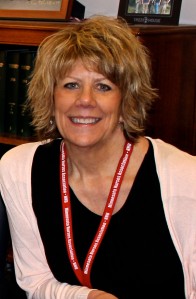By Mathew Keller RN JD, Regulatory and Policy Nursing Specialist

In a decision that has shocked pediatric surgeons across the state, Florida recently repealed a 38 year-old rule establishing state standards for pediatric cardiac surgery. The decision comes on the heels of a scathing investigative report by CNN, which found that St. Mary’s Medical Center in West Palm Beach had an abysmal record in performing pediatric cardiac surgeries—including a death rate three times the national average. St. Mary’s was also failing to meet the state’s quality standards, which include proficiency in performing the surgeries as well as a mechanism for outside physicians to conduct an expert panel review of such surgical programs. The rule also established standards and criteria for staffing, minimum physician and facility volumes, and data reporting for hospitals that perform pediatric cardiology surgery.
Florida doctors and medical experts were strongly against the repeal. Louis St. Petery, a pediatric cardiologist in Tallahassee and former executive vice president of the Florida chapter of the American Academy of Pediatrics, told CNN that “The whole situation is outrageous. It’s just outrageous.” William Blanchard, a pediatric cardiologist and former medical director of the Nemours Children’s Clinic in Pensacola, stated at a hearing on the standards that getting rid of them is “both poor public policy and poor politics.” Jeffrey Jacobs, a professor of surgery at Johns Hopkins, further argued that the standards “are necessary to protect the vulnerable children with heart disease.”
For those who wonder why Florida repealed its standards despite the strong opposition of the medical community, look no further than the contributions of St. Mary’s parent company, Tenet Healthcare, to Florida governor Rick Scott and the legislative majority GOP party. In fact, Tenet has donated more than $200,000 to Governor Scott and the GOP over the last several years. David Nykanen, a pediatric cardiologist and member of the state’s Cardiac Technical Advisory Panel, pointed out to CNN that Scott has been in office since 2011 and his administration never objected to the standards until a Tenet hospital was found publicly not to meet them. “The coincidence is just a little too much,” said Nykanen, co-director of the Heart Center at Arnold Palmer Hospital for Children in Orlando. “It’s just a little hard to swallow.” In fact, the standards have been in place since 1977, and many physicians pointed out that they served as an example for other states such as Pennsylvania, which has similar standards for pediatric cardiac surgery.
So what does this mean for us Minnesotans? For one, it’s a warning. If you think something like this could never happen in Minnesota, you are wrong. Big corporate healthcare is alive and well in our state, and as corporations like Fairview, Allina, Mayo, Sanford, Essentia and others swallow up their competition, they become bigger and bigger players on the political scene, wielding outsized influence at the capital with their brand and their political contributions. We have seen big corporate healthcare advance its aims more and more through the legislative process, not necessarily in the interest of what’s good for Minnesotans, but rather what’s good for their bottom lines.
Community EMT, the nurse compact, telehealth, and so on. It’s not Minnesotans advancing these issues, it’s big corporate healthcare. When Minnesotans hear that a bill is being pushed by Mayo, or any of the other large corporate healthcare players, we tend to automatically assume that it is good for us and in our best interest, but we need to dig deeper and uncover who big corporate healthcare is actually looking out for. We as citizens must remain vigilant, because what happened in Florida could happen to us.









![FullSizeRender[3]](https://mnnurses.files.wordpress.com/2016/01/fullsizerender3.jpg?w=490&h=367) It was a lovely day in Iowa this past Saturday. I along with Pat Webster were door knocking for Bernie Sanders.
It was a lovely day in Iowa this past Saturday. I along with Pat Webster were door knocking for Bernie Sanders. 



















Recent Comments